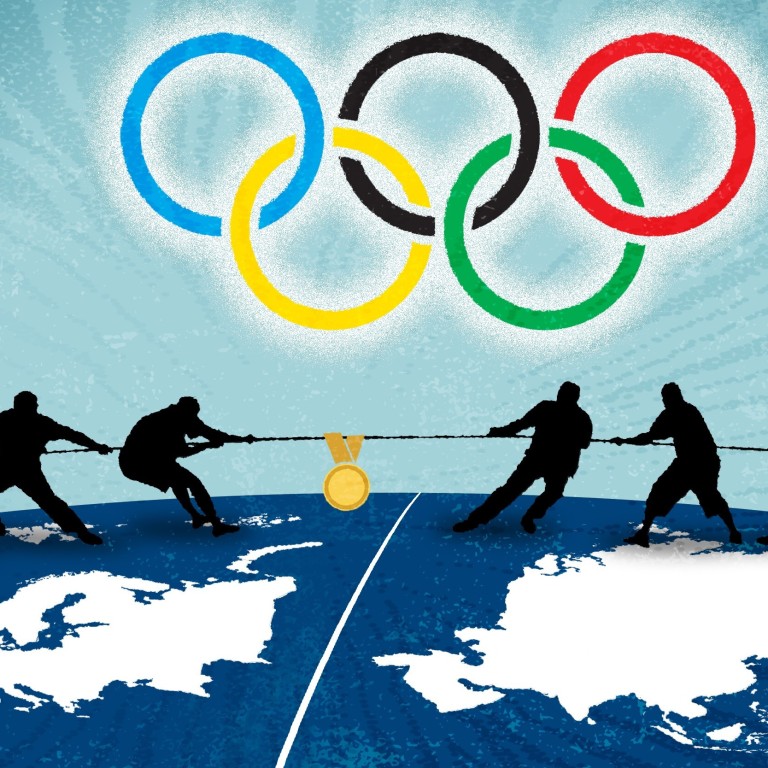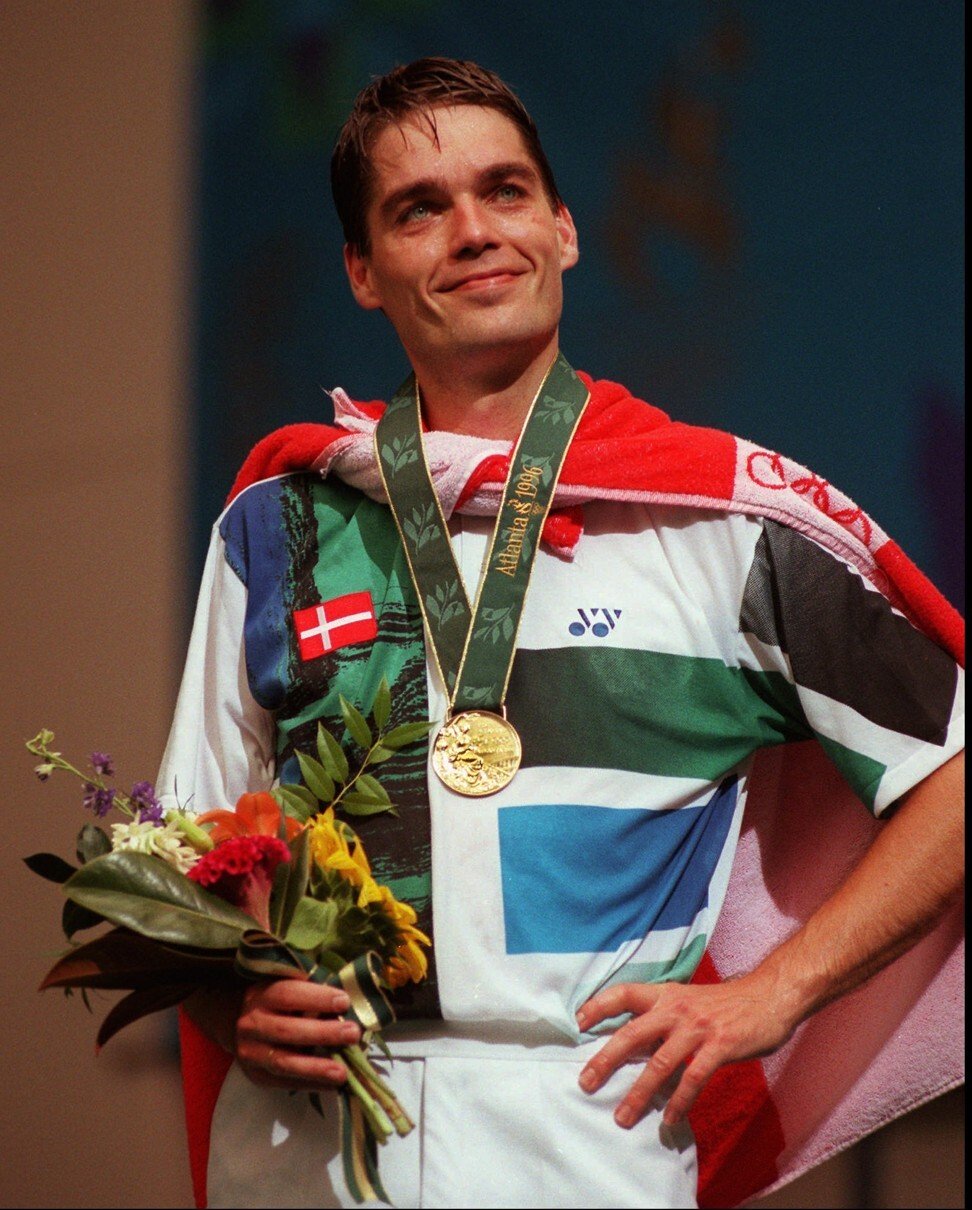
Tokyo Olympics: will European shuttlers threaten Asia’s badminton dominance?
- After a poor showing at the 2014 All England Open, European badminton has been on the rise, with stars from Denmark and France performing well
- But Asian countries such as China and Indonesia have long had a stranglehold on Olympic badminton, leaving the West with an uphill fight
Our Tokyo Trail series looks at key issues and athletes in the run-up to the 2020 Olympics, which are scheduled for late July.
In 2014, European badminton hit its nadir at the National Indoor Arena in Birmingham, England. For the first time in 115 years, no shuttler from the continent reached the semi-finals of the prestigious All England Open – the world’s oldest badminton tournament – with competitors from Asia instead filling up every final-four slot in all five events.
Their overwhelming dominance alarmed Badminton World Federation (BWF) president Poul-Erik Hoyer Larsen into issuing a warning to the Europeans: raise your standards, or see a permanent power shift to Asia.
The West has responded in the seven years since. Spain’s Carolina Marin is the first female three-time world singles champion, and became the first Olympic women’s singles champion from outside Asia at Rio 2016. Denmark’s Viktor Axelsen, the Olympic men’s singles bronze medallist in Brazil, became world champion in 2017.
Tokyo Olympics: what are athletes from 205 nations shipping to the Games?
Now, he and compatriot Anders Antonsen are serious contenders for the Olympic crown at the upcoming Tokyo Games. They are ranked second and third in the world respectively, and between them have amassed seven BWF World Tour titles since last year.
“The Danes have a good chance of winning a gold medal. [Axelsen and Antonsen] have been playing at a high level consistently, ” said Raphael Sachetat, co-founder of badminton publication Badzine and a keen observer of the sport for more than two decades. “When you play at such high levels and win titles, it gives you that type of confidence to prepare for big games.”

But a Danish champion in Tokyo will not only be a repeat of Hoyer Larsen’s feat when he won gold for Denmark at Atlanta 1996. It may also indicate that Europe is slowly chipping away at Asia’s stranglehold on Olympic badminton, a sport that has only seen two non-Asian champions – Hoyer Larsen and Marin – since it was introduced as an official event in 1992. China, Indonesia, South Korea and Japan are the other gold medallists over that period.
With the exception of table tennis – which has only had one European gold medallist, in 1992 – no other Olympic sport has such a record. Even traditional Asian sports such as judo and taekwondo have had athletes from the likes of Cuba, Iran, and Mexico atop the podium.
“While it may not be now, I do see that the Europeans may be coming up in the near future,” said Derek Wong, who represented Singapore in badminton at the 2012 and 2016 Olympics.
A European emergence …
Badminton’s profile has changed in Europe in recent years. With the exception of Denmark – a powerhouse – and England, most of the continent traditionally views it as a casual backyard game, but now, many are taking the sport more seriously.
In France, for example, badminton’s rising popularity in the past 15 years has led to more talented children joining clubs at an early age, according to Sachetat of Badzine. “This brings in a whole generation of very good players,” he said.
The results back him up. The French team reached the quarter-finals in the 2018 Thomas Cup, the men’s tournament that is considered one of badminton’s showpiece events. Young French talent Christo Popov clinched a silver at the 2019 BWF World Junior Championships, in a tournament previously contested by leading badminton players such as defending Olympic champion Chen Long from China and current world No 1 Kento Momota of Japan.
Spaniard Marin’s trailblazing achievements on the world stage have also bolstered belief in the West. “There is now a switch in the mindset of the Europeans that they can beat the Asians. It’s a big change,” Sachetat said. “It’s a more balanced playing field than it used to be.”
The export of Asian coaches to Europe over the years has also elevated standards there, according to Ronald Susilo, who represented Singapore at the 2004 and 2008 Olympics. “Many European countries are hiring Asian coaches and they help contribute to the development of badminton [there],” he said.
Many come from China. The German national team is led by Wang Xuyan, who left for Europe in 1990. Leading Danish players such as Axelsen, Hoyer Larsen and Peter Gade have been mentored by Zhang Lianying, a coach who has been an influential presence in Denmark’s national team set-up for more than two decades.
On the courts, Europeans are now changing up their gameplay, opting for dexterity over physicality. “The nature of the sport itself requires a lot of agility, and reflexes have to be fast,” Susilo said.
These were traits that many older European players used to lack. “You can see that they were a lot stiffer than the Asian players,” said former Olympian Wong. “If you look at the progression of the European players, they’re gradually becoming more agile.”
Tokyo Olympics: ‘Japanese only’ signs spark outrage as sponsors count cost of spectator ban and Covid-19 state of emergency
Axelsen’s training places huge emphasis on these traits, with footwork drills regularly making an appearance on his Instagram page. “He knows that’s what is required to play at a high level,” Wong added.
European nations are also boosting standards by sharing knowledge. “The countries are starting to work together in a cleverer way where they exchange sparring partners and train together,” Sachetat said, with one example Dutch shuttler Mark Caljouw’s 2019 relocation to Denmark for training.
This joint effort is Europe’s attempt to counter the massive resources Asian nations have invested in their shuttlers. “The success of badminton in Asia is mostly due to the consistent yearly contribution from corporations and governments, including incentives such as focused training programmes and facilities,” said former shuttler Susi Susanti, Indonesia’s first Olympic gold medallist.
For example, Indonesian tobacco manufacturer Djarum is a long-time investor in the country’s badminton system, with its eponymous badminton club producing Olympic champions such as Liliyana Natsir and Tontowi Ahmad.
… but Asia to dominate in Tokyo?
Nonetheless, badminton watchers feel that this year’s Games come too soon for European badminton, with most expecting Asia to rule the roost again. It doesn’t help that Marin has withdrawn from the Olympics after sustaining a serious knee injury last month – the top 10 women’s seeds, with the exception of Michelle Li from Canada, are all Asian.
It’s a similar situation in the team events, where the Europeans “have almost no chance”, according to Sachetat.
“They will have to bring their A game to every single match against the top Japanese, Chinese and Indonesians, and that’s very hard to do,” he said. “You have to be very focused – it drains you mentally and physically.”
Tokyo Olympics: why are there more female than male athletes from Hong Kong for the second Games in a row?
For now, Europe’s best hopes lie in Danes Axelsen and Antonsen in the men’s singles. However, China – which boasts the most Olympic badminton medals, at 41 – will be heading into the Games as an unknown quantity. The Covid-19 pandemic has prevented its players from competing in over a year, and their form remains a huge question mark.
“It’s difficult to assess whether they’re in good form or whether they’ll perform at their best,” Sachetat said.
While European badminton is on the rise, there is one aspect in which it might never overtake Asia: crowd presence. At stadiums in Indonesia, Thailand and Malaysia, the atmosphere is always electric, reflecting the passion that Asians have for the sport. “The singing and cheering can go on until the end of the matches for these countries,” said Singapore’s Wong.
Added Sachetat: “It’s amazing to see that level of excitement and enthusiasm. It can be like a football stadium in Barcelona, or a boxing stadium in the United States. You really feel like the people are living the sport. It gives you goosebumps.”













